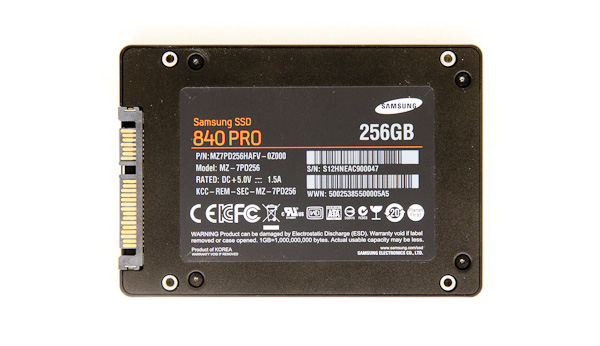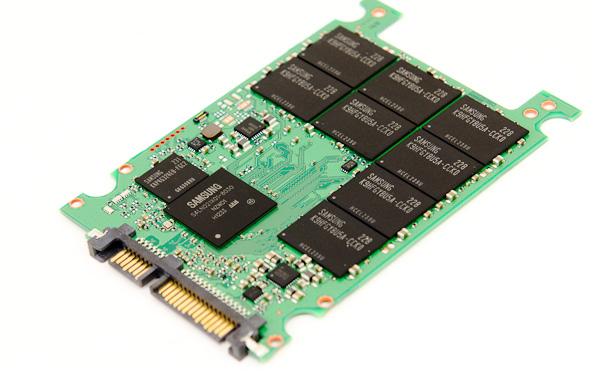Samsung SSD 840 Pro (256GB) Review
by Anand Lal Shimpi on September 24, 2012 7:00 AM EST- Posted in
- Storage
- SSDs
- Samsung
- Samsung SSD 840
Final Words
The performance and power characteristics of Samsung's SSD 840 Pro are as close to perfect as we've seen from any drive this generation. In all but a handful of benchmarks, the 840 Pro is the fastest consumer SSD we've ever tested. Even more important than its industry leading performance is the fact that the 840 Pro delivers great performance while remaining one of the lowest power SSDs to make it through our labs. Assuming the premature death of our review sample was a fluke and not indicative of a bigger issue, the 840 Pro could be the first drive in quite a while to offer the absolute best performance at power consumption levels that are notebook friendly. Update: Our replacement 840 Pro also died prematurely, I'd recommend holding off any purchases until we hear back from Samsung as to the cause of death. Update 2: It looks like this may have been a firmware issue. Retail drives should ship with fixed firmware.
The 830 proved quite reliable, so as long as Samsung can guarantee similar levels of compatibility and reliability out of the 840 Pro it looks to have a real winner on its hands.
The vanilla 840 is super interesting. We've never tested a 3bpc MLC drive in house, and although Samsung isn't promising huge cost savings initially - over time the move to 3bpc MLC will aggressively drive mainstream SSD prices down.












96 Comments
View All Comments
iwod - Tuesday, September 25, 2012 - link
True but i think there will be a bottleneck somewhere else once we hit certain number of Random Read. Anand already has results that any more then 40~50MB/s random wrote give us any more benefits. I think it would be similar for Random Read as well although we have so far not reach that point yet.Of coz these results are with today's software. Things could be different again when we reach that limit.
leboon - Monday, September 24, 2012 - link
Thanks for the review. I must say that the random comments interspersed throughout the article about the regular 840--which isn't even being reviewed-- seemed rather strange and out of place.On topic though, this new Samsung drive looks very promising and I'm looking forward to grabbing one of them when they're released, to breathe new life into an aging laptop.
Kristian Vättö - Monday, September 24, 2012 - link
That's because we didn't get any information about the regular 840 until a few hours before the NDA was lifted, but at least I feel like it was still important to note that such drive exists.There will be a review ASAP though. I just came back to my hotel room and found a gift box with a 250GB 840 in it :-)
nathanddrews - Monday, September 24, 2012 - link
"Joy!"-Stimpy
Grok42 - Monday, September 24, 2012 - link
Quit yammering and get to testing and writing! I'm guessing that is the 840 non-pro? Never mind, don't answer that, just focus.dishayu - Monday, September 24, 2012 - link
Active power : 0.068WSurely this has to be a mistake? I can't imagine any drive today with such low active power today.
DanNeely - Monday, September 24, 2012 - link
I'd like to know what Samsung's measuring for that number too; Anand measured the 840 pro an order of magnitude higher during write operations. Unless that number is just for the controller and not for the flash too there's something not right about the gap between that number and what AT's measuring.iwod - Monday, September 24, 2012 - link
I think that is only the controller. You have to include the LP-DDR2 as well.Its Working power is still higher then Intel. Although i dont like sammy, i hope the final product will be even better then this.
LGrill - Monday, September 24, 2012 - link
I was thinking the same thing.ssj3gohan - Monday, September 24, 2012 - link
This is completely correct. Anandtech and basically every other review site out there measures power consumption wrong: they measure it while *not* booted into an OS that supports SATA power management. With DIPM (device initiated power management) enabled, the drive should hit this power consumption easily.Same goes for pretty much every other SATA SSD these days. They're all well below 0.3W idle except for Sandforce drives. For instance, all Intel drives (intel- and marvell-based) are about 75 to 100mW idle.